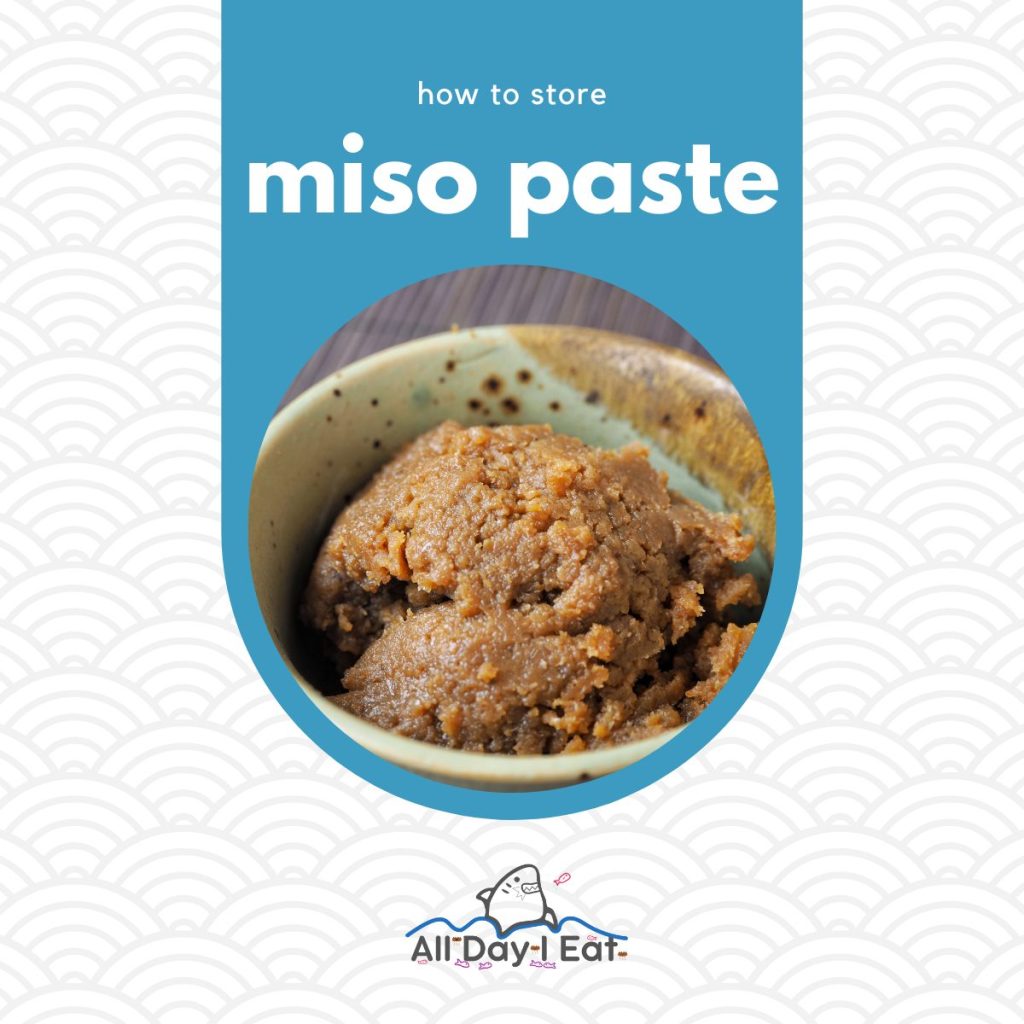Are you wondering how to store miso paste to keep it fresh and flavorful? Look no further! In this article, we’ll guide you through the steps to ensure your miso paste stays in top condition.
From choosing the right container and sealing it properly to avoiding cross-contamination, we’ve got you covered.
Plus, we’ll teach you how to check for signs of spoilage.
Get ready to store your miso paste like a pro!
Key Takeaways

- Choose an airtight container to prevent air and moisture exposure.
- Store miso paste in the refrigerator to prevent bacterial growth and preserve flavor.
- Keep miso paste separate from raw meats, fish, and strongly scented ingredients to avoid cross-contamination.
- Regularly check for signs of spoilage, such as sour smells, mold, or changes in color or texture.
How to Store Miso Paste Step #1: Choose the Right Container

Learning how to store miso paste also means that you should place it in a suitable container. Choosing the right container is essential to maintain the quality and freshness of the paste.
Opt for an airtight container that can prevent exposure to air and moisture, as these can cause the miso paste to spoil quickly. Glass jars or plastic containers with tight-fitting lids are ideal options. Make sure the container is clean and dry before transferring the miso paste into it.
Additionally, consider the size of the container. It should be large enough to accommodate the entire quantity of miso paste without leaving much empty space, as this can lead to oxidation and loss of flavor.
Following these guidelines will ensure that your miso paste stays fresh and delicious for longer.
How to Store Miso Paste Step #2: Keep It Refrigerated

Store your miso paste in the refrigerator to maintain its freshness and quality. Refrigeration is essential for preserving the flavor and texture of miso paste.
Here are five reasons why refrigeration is crucial:
- Prevents spoilage: Refrigeration prevents the growth of harmful bacteria, ensuring that your miso paste stays safe to consume.
- Retains flavor: Cold temperatures help to slow down the oxidation process, preserving the rich umami taste of miso paste.
- Extends shelf life: Storing miso paste in the fridge keeps it fresh for a longer period, allowing you to enjoy its deliciousness for months.
- Maintains consistency: Refrigeration helps to preserve the smooth and creamy texture of miso paste, making it easier to incorporate into your dishes.
- Minimizes fermentation: By keeping miso paste refrigerated, you can slow down the fermentation process, maintaining its quality over time.
How to Store Miso Paste Step #3: Seal It Properly

Make sure you tightly seal the container holding your miso paste. Properly sealing the container is essential for maintaining the freshness and flavor of the paste.
When exposed to air, miso paste can quickly lose its quality and become less flavorful. To ensure a tight seal, first, check the lid or cap of the container. It should fit snugly and securely, with no gaps or loose parts.
If the original packaging doesn’t provide a tight seal, consider transferring the miso paste to an airtight container. Mason jars or Tupperware with airtight lids are great options.
When sealing the container, make sure to press down firmly on the lid to create a tight seal. This will help to keep out air and moisture, preserving the miso paste for longer periods.
How to Store Miso Paste Step #4: Avoid Cross-Contamination

To prevent cross-contamination, ensure that you keep your miso paste separate from other food items.
Follow these steps to avoid any potential contamination:
- Store your miso paste in a designated container or jar with a tight-fitting lid.
- Keep it in a separate section of your refrigerator, away from raw meats, fish, and other strongly scented ingredients.
- Use a clean utensil, such as a spoon or chopsticks, to scoop out the desired amount of miso paste.
- Avoid using the same utensil for other food items to prevent any transfer of bacteria.
- Always seal the container tightly after each use to maintain freshness and prevent any potential contamination.
How to Store Miso Paste Step 5: Check for Signs of Spoilage

After storing your miso paste properly, it’s important to regularly check for signs of spoilage to ensure that it’s still safe to use.
Spoiled miso paste can have a sour or off smell, indicating the presence of harmful bacteria. It may also develop mold or a yeasty aroma, which are clear indicators of spoilage. Additionally, check for any changes in color or texture. If the miso paste becomes darker or develops a slimy consistency, it’s likely no longer safe to consume.
To prevent spoilage, always use clean utensils when scooping out miso paste and ensure the container is tightly sealed after each use.




Konnichiwa! (Hello!) I'm Pat Tokuyama, a Japanese tofu cookbook author, who travels for music, food, and adventure. If you like Japanese tea, checkout some of the newestorganic japanese tea, matcha bowls and noren and more!
** Curious about the Plant Based Japanese Cooking Club? ** Learn more here!